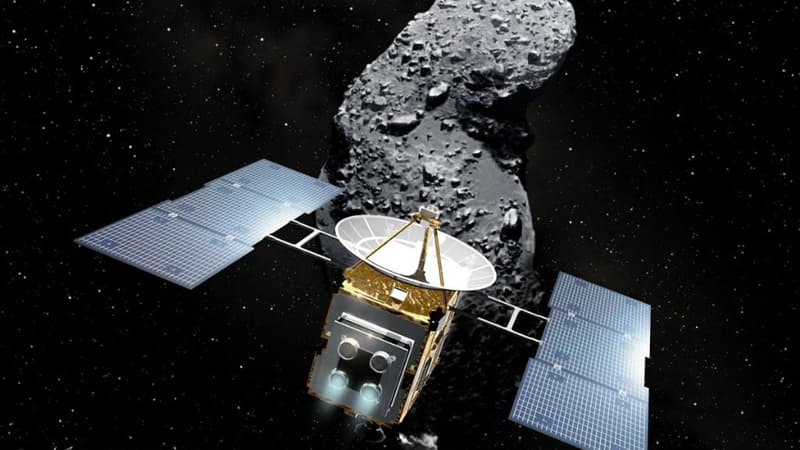The grains are tiny, smaller than the width of a hair, but they contain the history, in billions of years, of the secrets of an asteroid. The three particles from the Itokawa asteroid revealed that this type of space object is much older than imagined and much harder.
Which would imply reviewing plans to avoid a collision with Earth, according to a study published this Monday in the journal Proceedings of the American National Academy of Sciences.
The three samples were recovered in 2005 from the asteroid, while it was cruising some 300 million kilometers from Earth. It took the Japanese space probe Hayabusa five years to bring them back to Earth, along with hundreds of other Itokawa particles.
Good shock absorption
Fred Jourdan, a professor at Australia’s Curtin University School of Earth and Planetary Sciences, sought to find out the age of Itokawa, a type of asteroid said to have a “loose cluster.”
It results from the assembly of the fragments of a monolithic asteroid that was pulverized by a shock. These monolithic asteroids are said to have a lifespan of a few hundred million years and to gradually erode from collisions with other asteroids. The loose cluster asteroid, like Itokawa, has a very different structure. With a motley collection of rocks, dust, gravel and even vacuum, held together by a simple effect of gravity.
“It’s like a giant cushion in space, and cushions are good at absorbing shock,” says Professor Jourdan.
To find out how much, the team analyzed the crystal structure of the samples, looking for deformations from the impact Itokawa created. And he also went out with them.
The DART experience as a model
The bottom line is that Itokawa formed after a collision that occurred at least 4.2 billion years ago, nearly the age of Earth (4.5 billion years), but mostly ten times older than the age of monolithic asteroids of similar size.
The resistance of this type of space objects to collisions is such that there should be many more of them than imagined, according to the study. With the consequence of adapting the roads to protect themselves from a collision of the Earth by this type of asteroids, the geochemist points out.
The DART experiment to deflect the trajectory of an asteroid, carried out successfully last year by NASA, shows that this is possible with an object like Itokawa, again according to the scientist. But this would require a much greater force to be applied to it, for example with a nuclear warhead, for “the shock wave to deflect the asteroid from its course.”
.
Source: BFM TV


